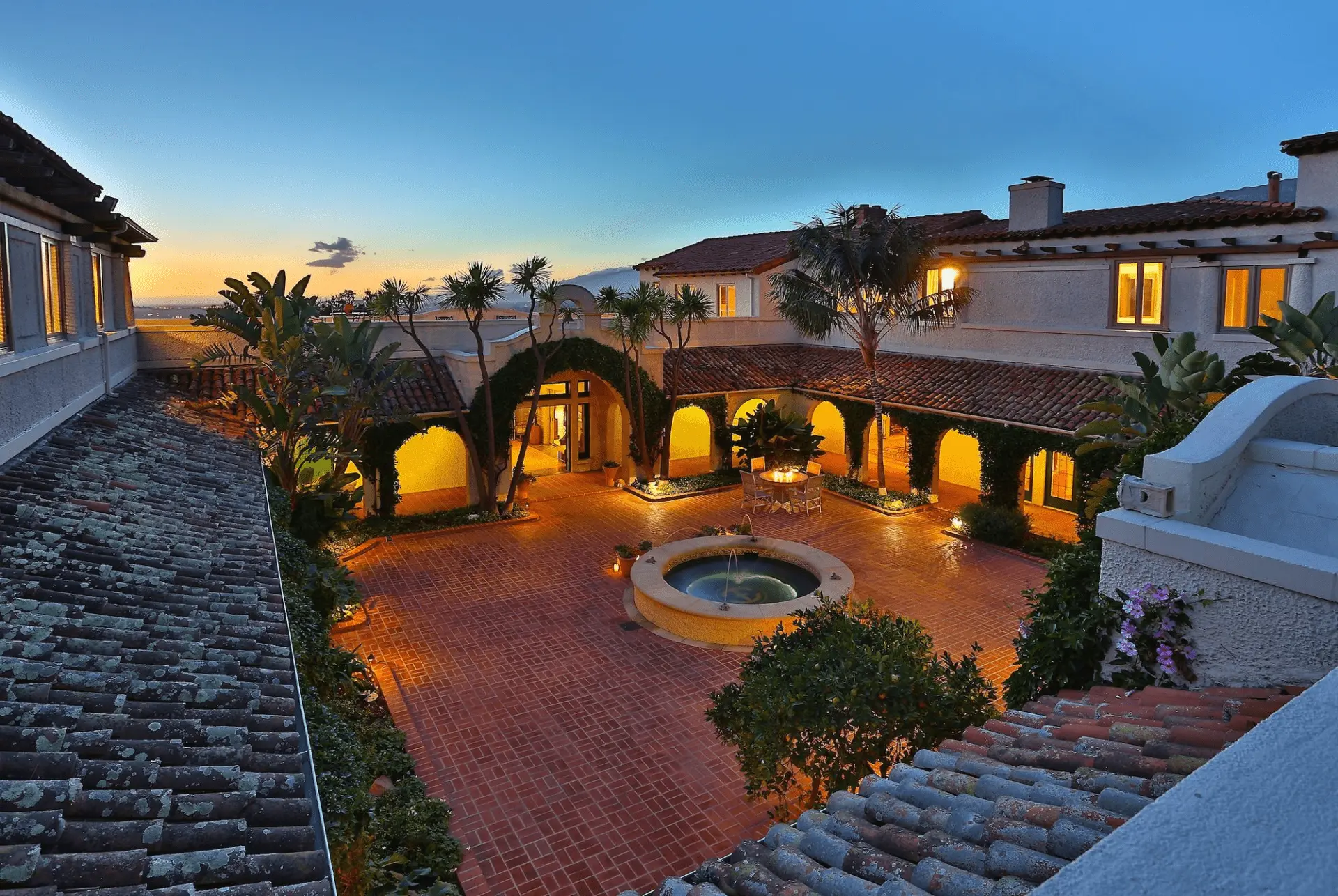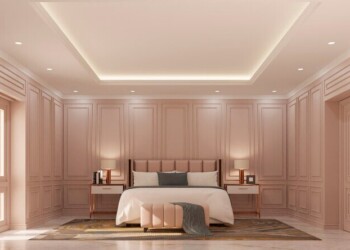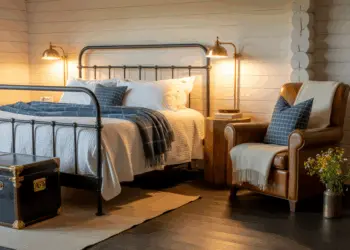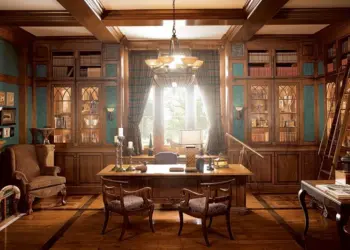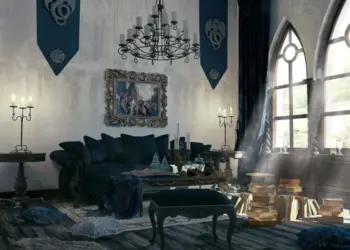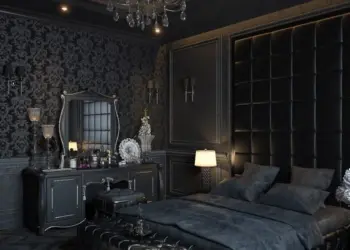In the world of architectural marvels, the Hacienda house design stands as a testament to the timeless fusion of tradition and modernity. These enchanting residences have a rich history dating back to colonial times and continue to captivate homeowners with their unique charm. In this article, we’ll delve into the captivating world of Hacienda house design, exploring its historical roots, key architectural elements, and how you can incorporate this style into your own home.
Table of Contents
Understanding the History of Hacienda House Design
The Colonial Influence
Haciendas originated in Latin America during the Spanish colonial era, primarily serving as large estates for agricultural and livestock production. These sprawling properties often featured a central courtyard, creating a sense of unity while providing functional space for various activities.
Evolution Over Time
As time passed, Hacienda house design evolved. The colonial influence gave rise to a distinctive architectural style characterized by thick adobe walls, terracotta roofs, and ornate ironwork. This fusion of Spanish and indigenous design elements became a hallmark of Hacienda homes.
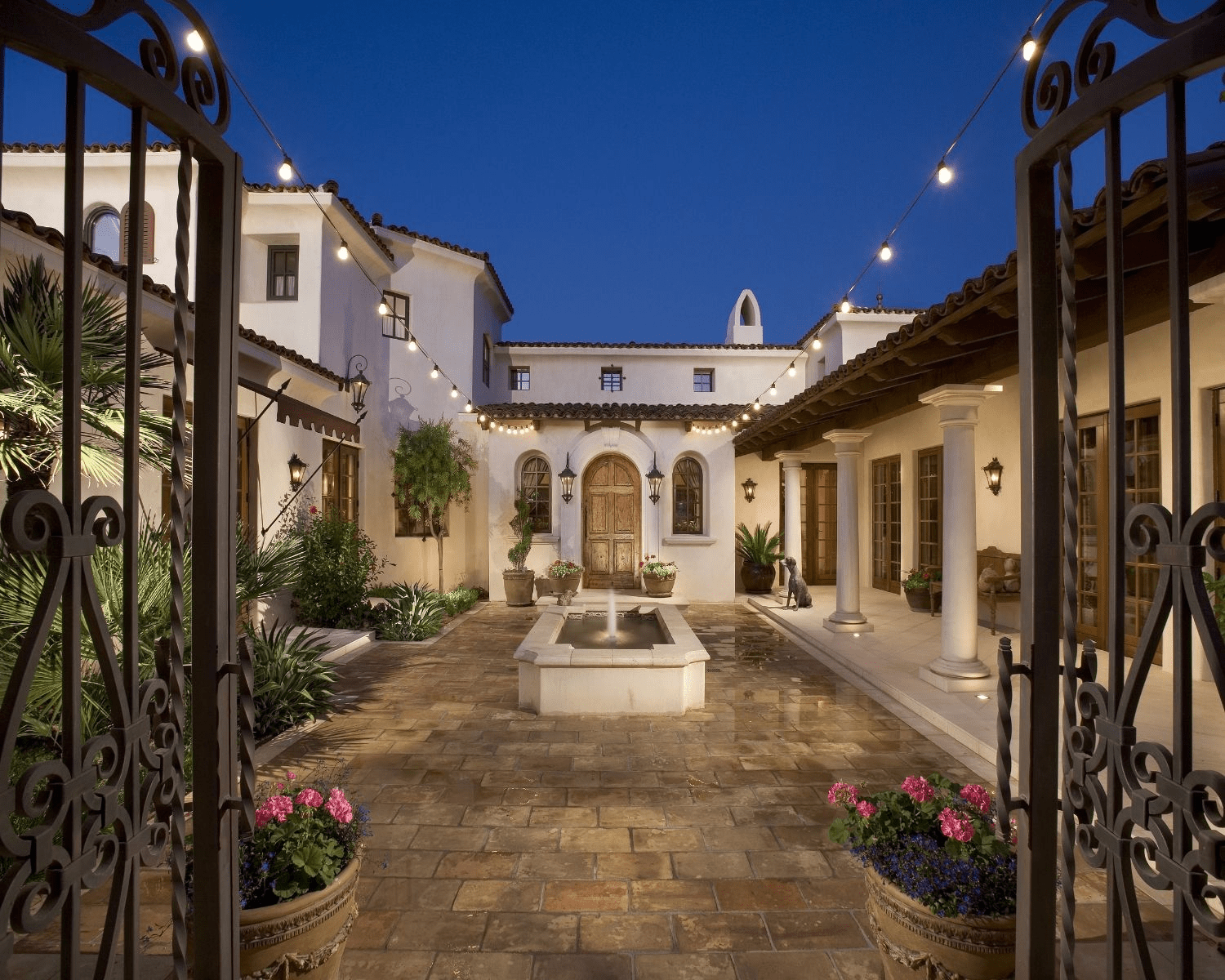
Embracing the Hacienda Lifestyle
Color Palette
The color palette in Hacienda house design is a critical component in creating the right ambiance. Earthy tones dominate, with hues like terracotta, deep reds, ochre, and shades of brown setting the stage. These colors not only reflect the natural surroundings but also create a warm and welcoming atmosphere.
Furniture Selection
When selecting furniture for your Hacienda-style home, consider pieces that embody the rustic elegance of this design. Wooden furniture with distressed finishes or wrought-iron elements can add authenticity to your interior spaces. For upholstery, choose rich, textured fabrics in warm colors to enhance the overall aesthetic.
Lighting
Lighting plays a pivotal role in Hacienda design. Think of soft, warm lighting that complements the rustic elements. Wrought-iron chandeliers with intricate detailing, table lamps with parchment shades, and wall sconces can all contribute to the cozy and inviting atmosphere.

Key Architectural Elements of Hacienda House Design
Courtyards: The Heart of Haciendas
Central courtyards remain a defining feature of Hacienda house design. They serve as a focal point, offering both visual appeal and functional purposes. Today, courtyards are often used as outdoor living spaces, complete with lush gardens, fountains, and seating areas.
Rustic Elegance
One of the most captivating aspects of Hacienda homes is their rustic elegance. Thick walls made from natural materials not only provide insulation but also exude an inviting warmth. Exposed wooden beams and stone flooring further enhance the rustic charm.
Handcrafted Details
Hacienda homes are known for their intricate handcrafted details. From carved wooden doors to wrought-iron chandeliers, every element tells a story. These artisanal touches add character and authenticity to the design.
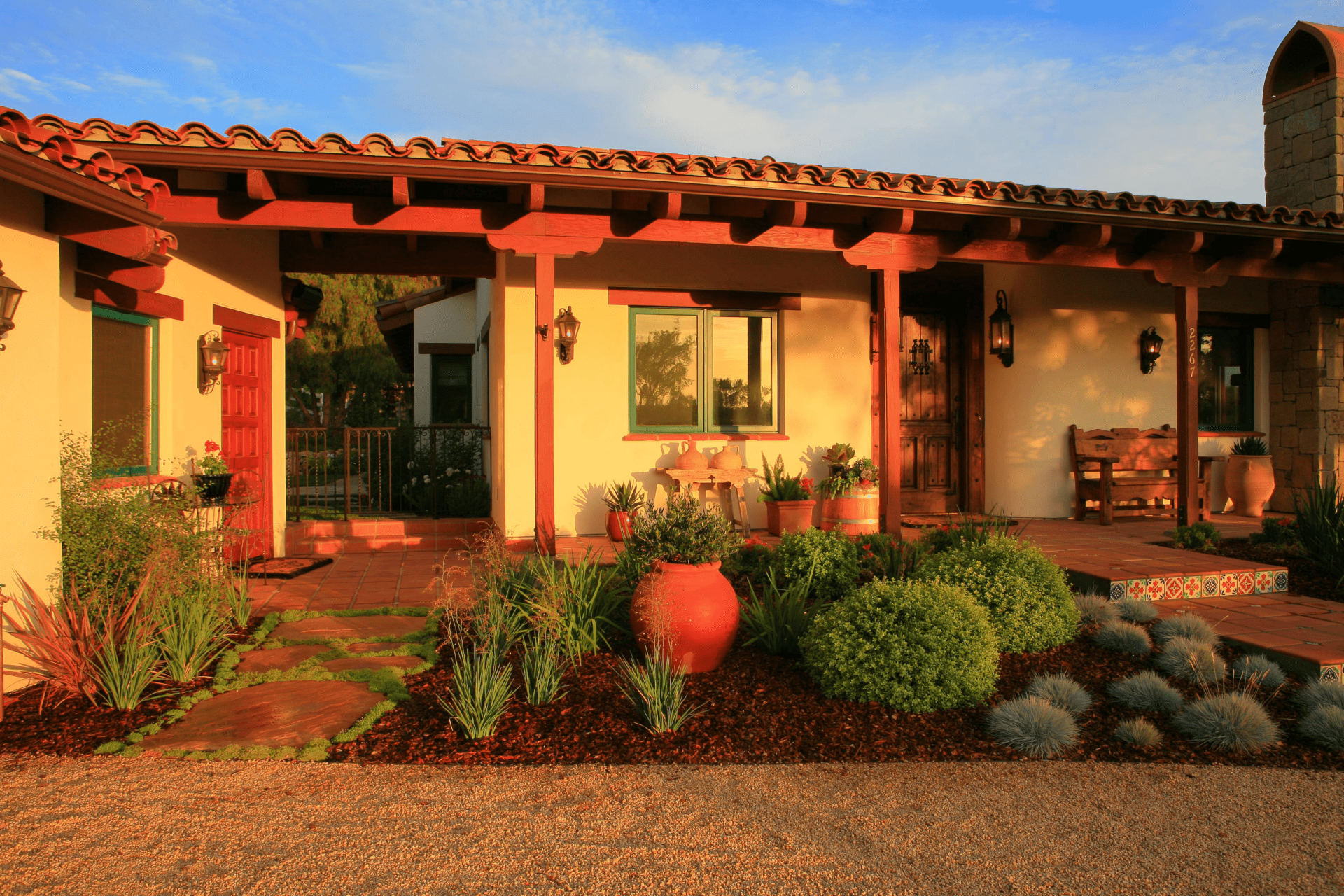
Incorporating Hacienda House Design Into Your Home
Courtyard Revival In Hacienda House Design
You don’t need a sprawling estate to embrace Hacienda style. Consider creating a small courtyard in your backyard, complete with colorful tiles, potted plants, and a cozy seating area. This miniature oasis can transport you to the heart of a Hacienda.

Terracotta Tiles In Hacienda House Design
Terracotta tiles are a simple yet effective way to infuse Hacienda charm into your interiors. They can be used for flooring, backsplashes, or even as decorative accents. Their earthy tones and texture capture the essence of Hacienda design.
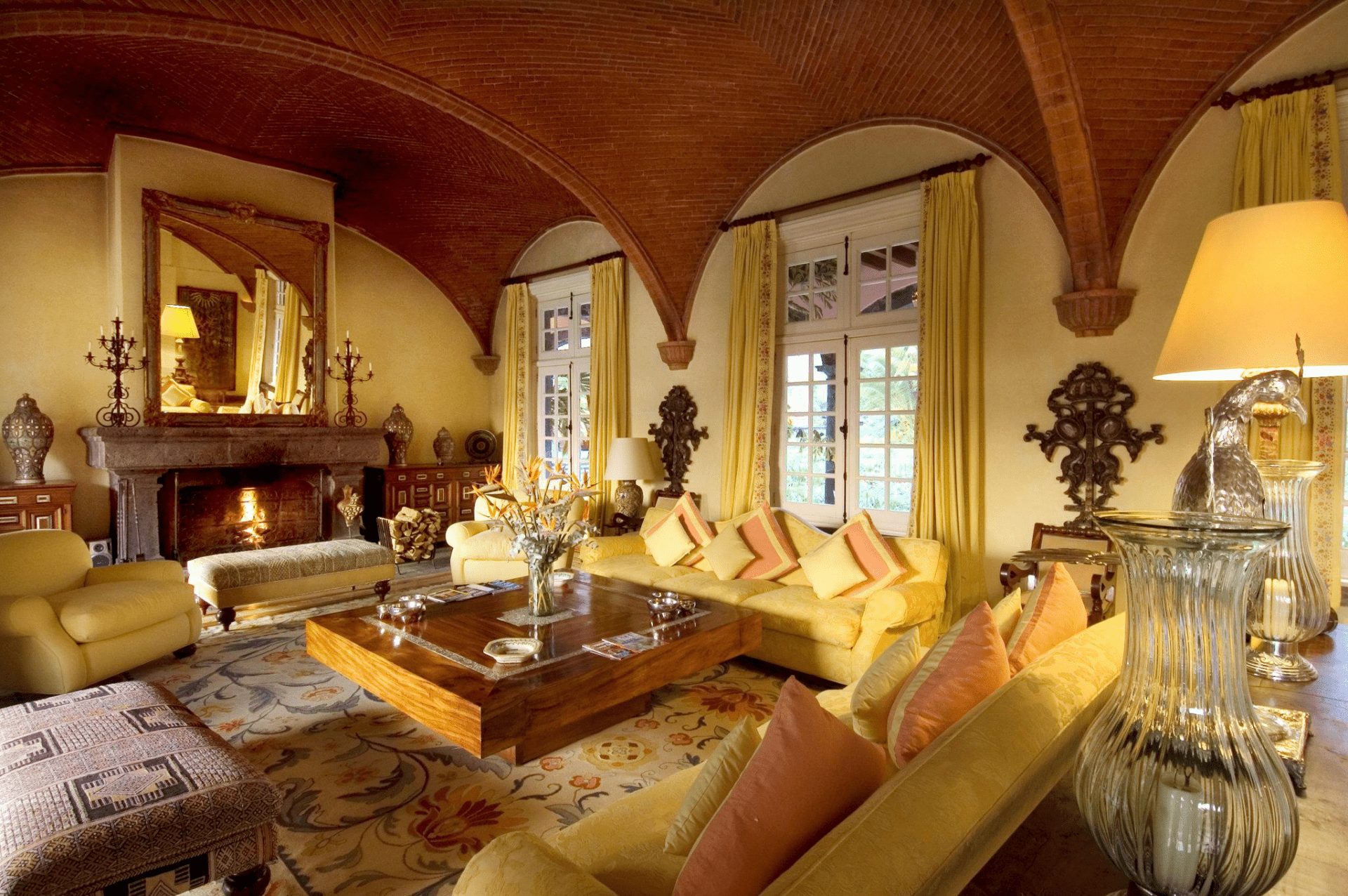
Wrought-Iron Accents In Hacienda House Design
Incorporate wrought-iron accents such as light fixtures, railings, and furniture into your home. These elements add a touch of authenticity and elegance, reminiscent of traditional Haciendas.
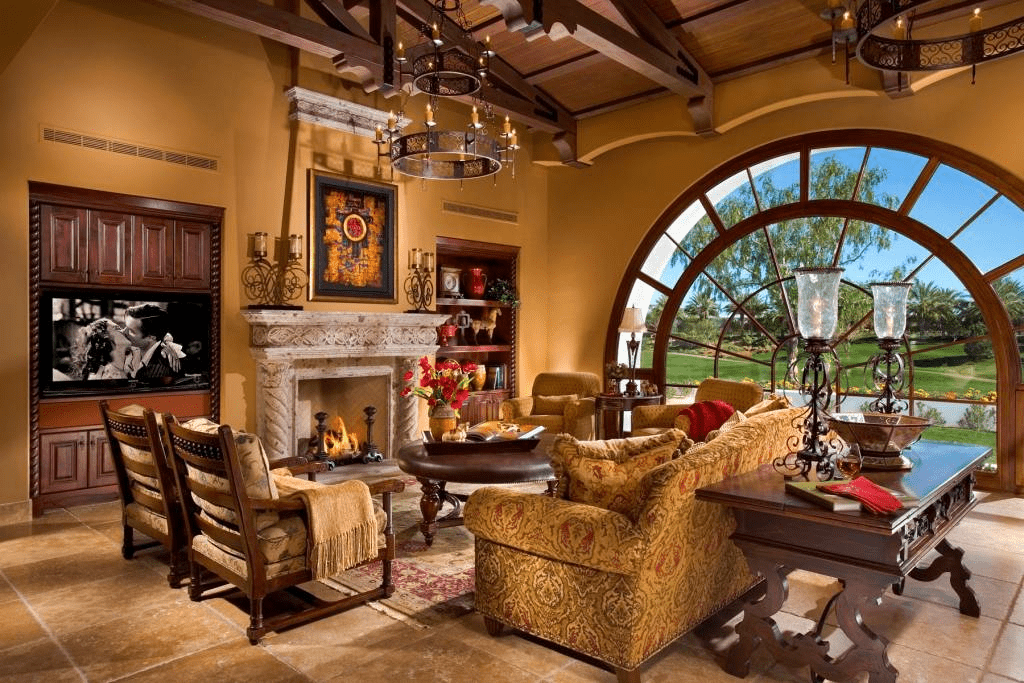
Thick Walls In Hacienda House Design
Use adobe or stucco for thick walls to provide insulation and maintain a cooler indoor temperature.
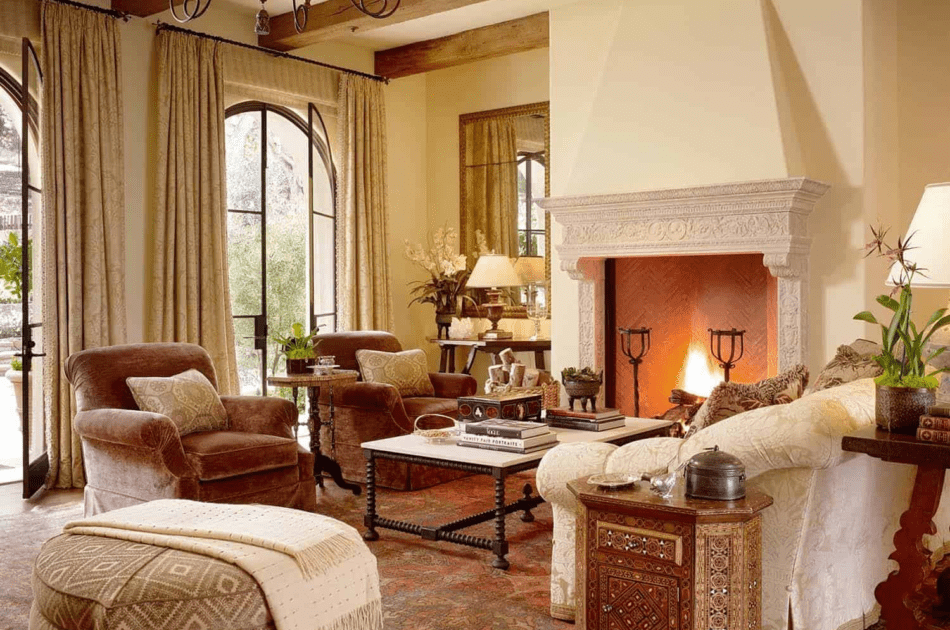
Wooden Beams In Hacienda House Design
Include exposed wooden beams on ceilings for an authentic rustic feel.
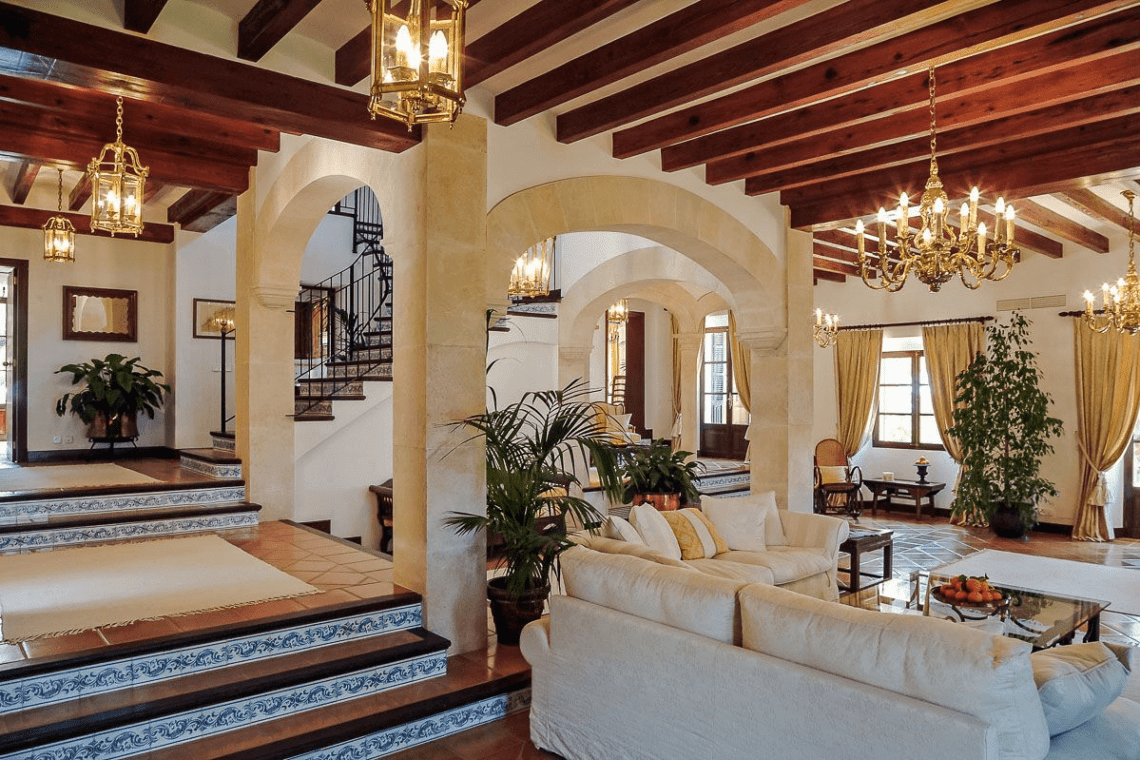
Earth Tones In Hacienda House Design
Use earthy and warm color palettes with shades of reds, browns, and yellows for both interior and exterior spaces.

Modern Interpretations of Hacienda Design
While traditional Hacienda house design remains captivating, many homeowners opt for a more modern interpretation. Here are some ideas to strike a balance between tradition and contemporary living:
Open Floor Plans
To adapt to modern lifestyles, consider open floor plans that seamlessly blend indoor and outdoor spaces. Large sliding glass doors can connect your living areas to a central courtyard, creating a sense of spaciousness and allowing natural light to flood in.
Sustainable Materials
Incorporate sustainable materials into your Hacienda-inspired home. Consider reclaimed wood for flooring, energy-efficient windows, and solar panels on the roof. This not only aligns with modern sustainability practices but also respects the historical connection to nature seen in traditional Haciendas.
Minimalist Furnishings
For a modern twist, embrace a more minimalist approach to furnishings. Choose clean lines and simple designs that maintain the focus on architectural details and natural materials. This approach can create a sense of balance between tradition and contemporary aesthetics.
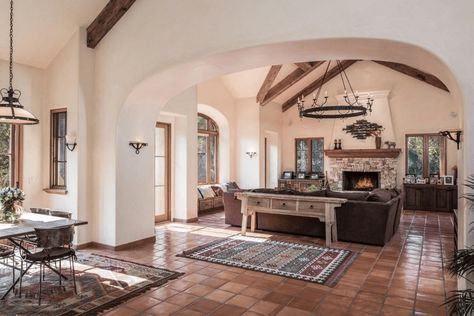
Hacienda-style and Spanish Revival
- Hacienda Style: Hacienda-style homes typically emphasize a central courtyard as a focal point and often have thick adobe or stucco walls. They are inspired by traditional Spanish colonial estates in the American Southwest and Latin America.
- Spanish Revival: Spanish Revival architecture is a broader style that draws inspiration from various Spanish architectural elements. It encompasses a range of designs, including homes with stucco exteriors, red tile roofs, arched doorways, and wrought iron details. Spanish Revival homes may not always have a central courtyard as a defining feature.
In summary, while both styles share some similarities, the term “hacienda” often specifically refers to a style inspired by traditional Spanish colonial estates and places a strong emphasis on central courtyards and thick walls for insulation. Spanish Revival, on the other hand, encompasses a wider range of Spanish-inspired architectural elements.
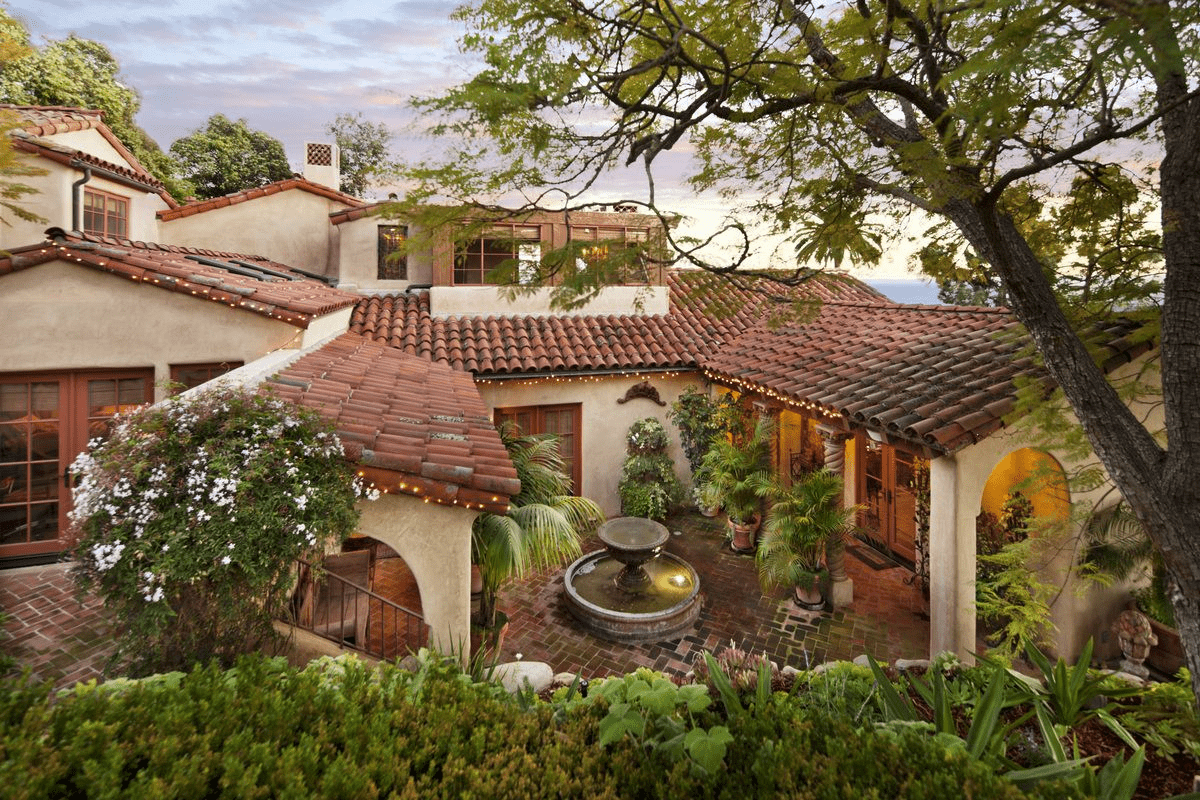
Hacienda house design is a captivating blend of history and aesthetics that continues to inspire homeowners around the world. By embracing its unique architectural elements and timeless charm, you can transform your home into a haven that celebrates the spirit of Hacienda living.
FAQs
What is the origin of Hacienda house design?
Hacienda house design originated during the Spanish colonial era in Latin America, serving as large agricultural estates.
Can I incorporate Hacienda House Design into a modern home?
Absolutely! You can infuse Hacienda charm into your modern home by using elements like terracotta tiles, wrought-iron accents, and central courtyards.
Are Hacienda House Design suitable for contemporary living?
Yes, Hacienda homes can be adapted to suit contemporary lifestyles while preserving their unique charm.
What are the key features of a Hacienda courtyard?
A typical Hacienda courtyard features lush gardens, fountains, seating areas, and colorful tiles.
How can I find inspiration for my Hacienda-style home?
You can find inspiration in books, online resources, and by visiting Haciendas or properties that incorporate this design style.
What is a hacienda-style house?
A hacienda-style house is inspired by traditional Spanish colonial estates, featuring thick walls, red tile roofs, central courtyards, and a blend of Spanish and Mexican architectural influences.
How to design a hacienda?
To design a hacienda-style home, incorporate elements like a central courtyard, thick walls, terracotta tiles, wooden beams, wrought iron details, and earthy color palettes.
What makes a hacienda?
A hacienda is typically characterized by a central courtyard and thick adobe or stucco walls.
Does hacienda mean home?
No, “hacienda” refers to a large estate or ranch in Spanish. In design, it describes a style inspired by traditional Spanish colonial homes.
What are two characteristics of a hacienda?
A hacienda is characterized by a central courtyard and thick adobe or stucco walls, which are two key defining features of this architectural style.
What is the difference between hacienda and Spanish revival?
Hacienda style places a strong emphasis on central courtyards and thick walls. Spanish Revival is a broader style encompassing various Spanish architectural elements, including stucco exteriors, red tile roofs, and arched doorways.
